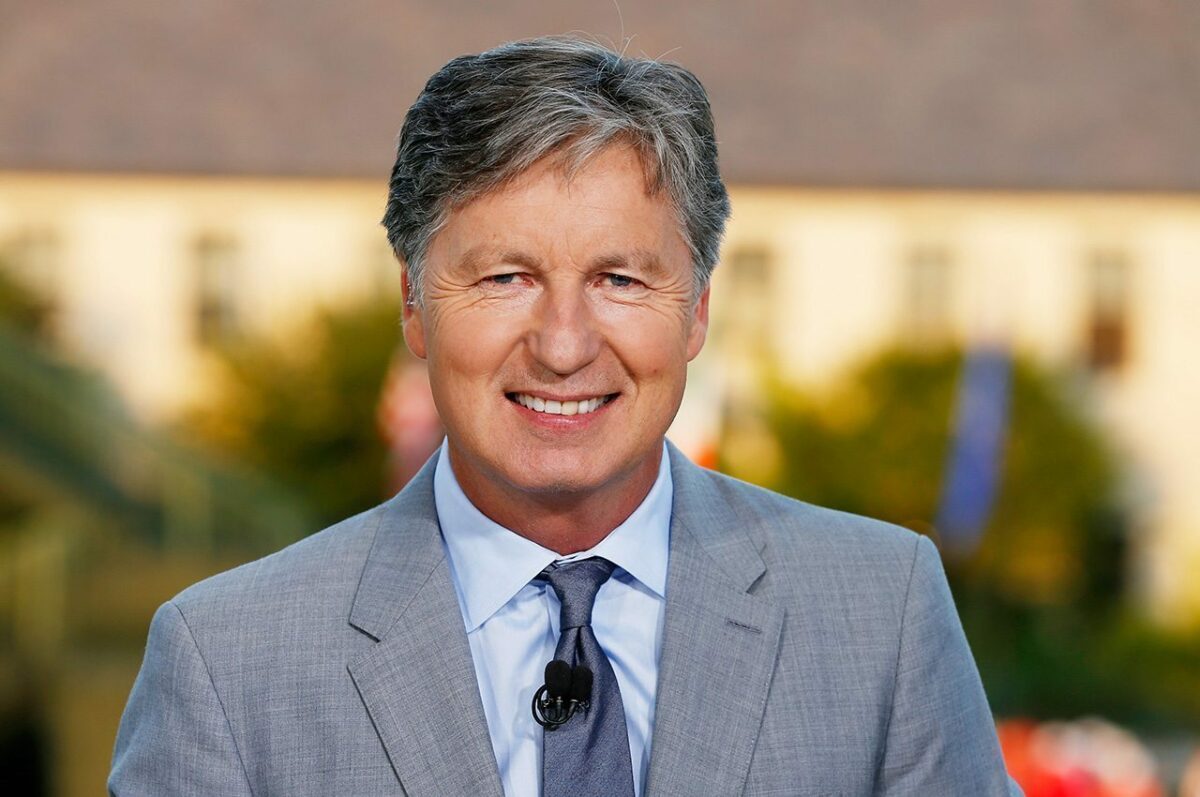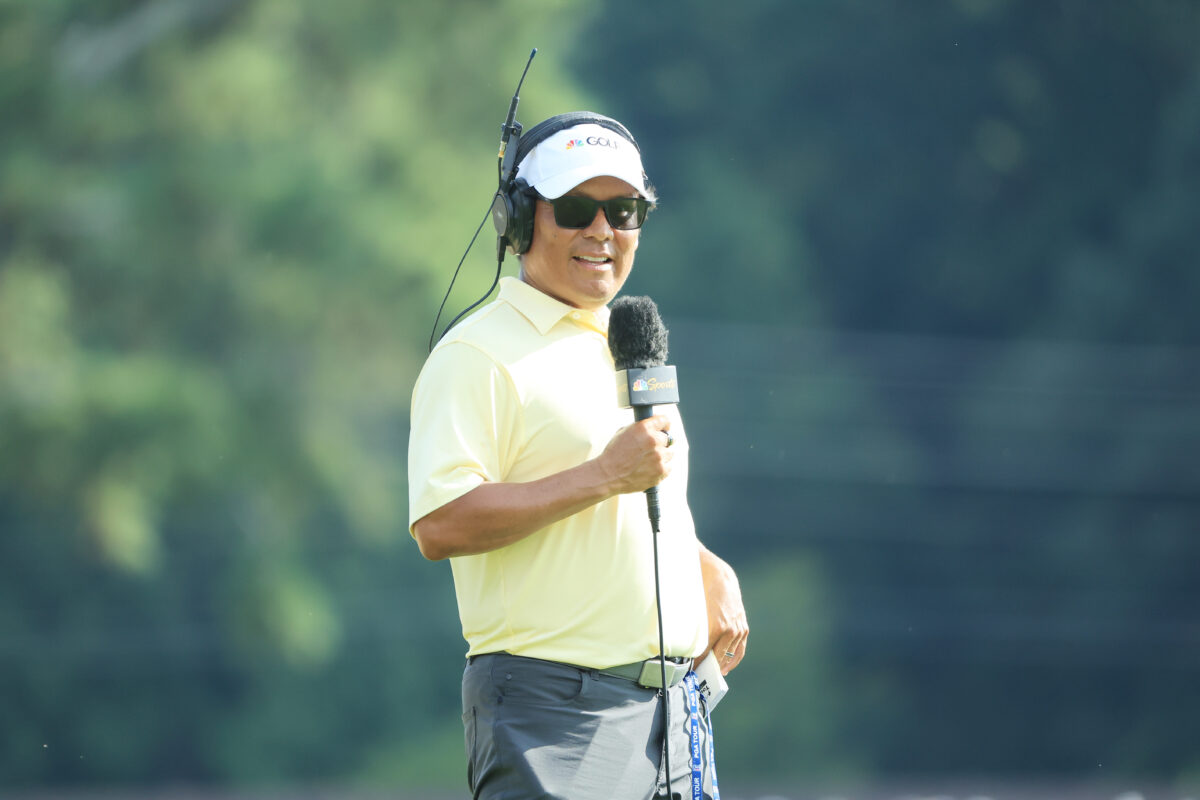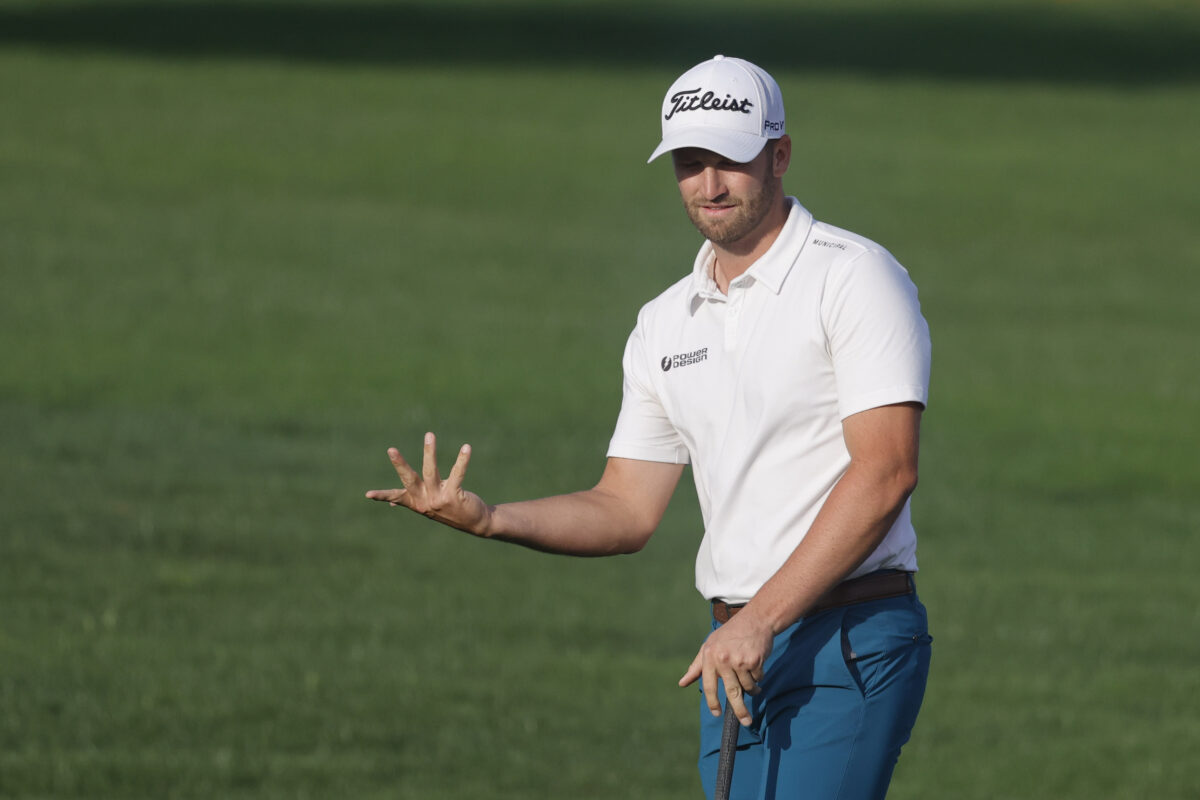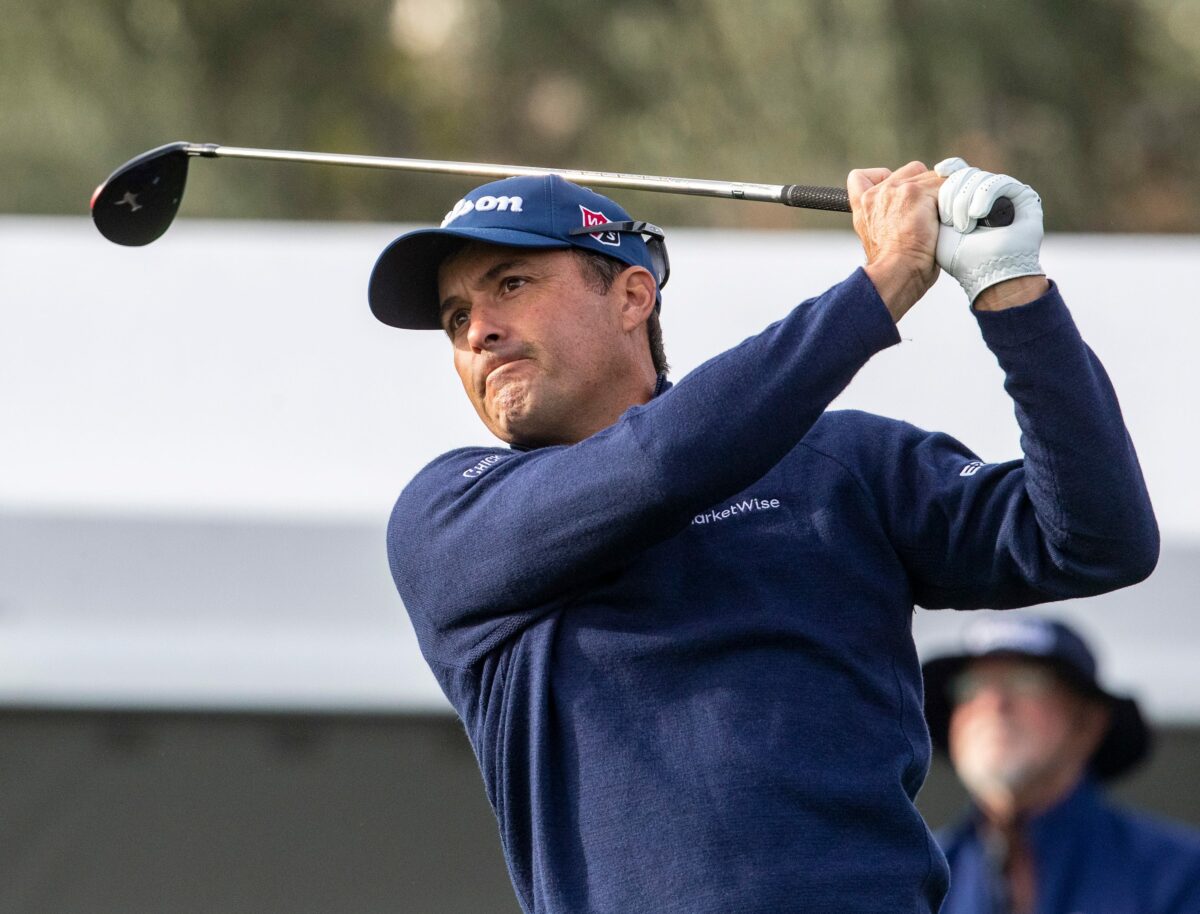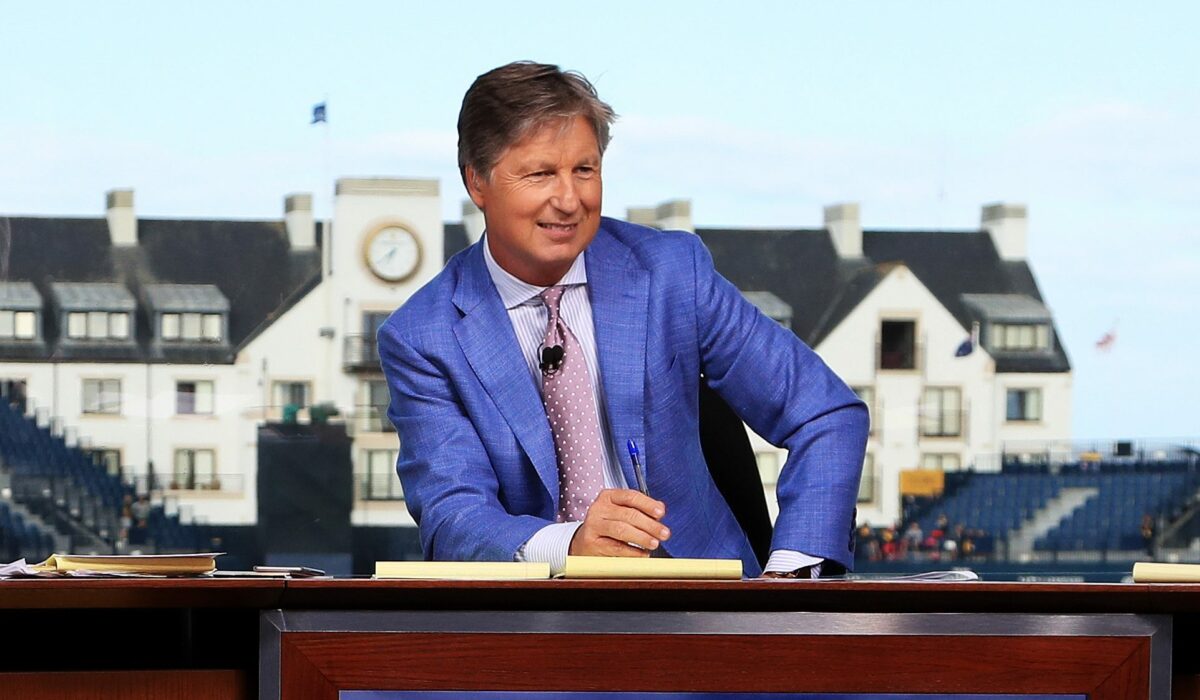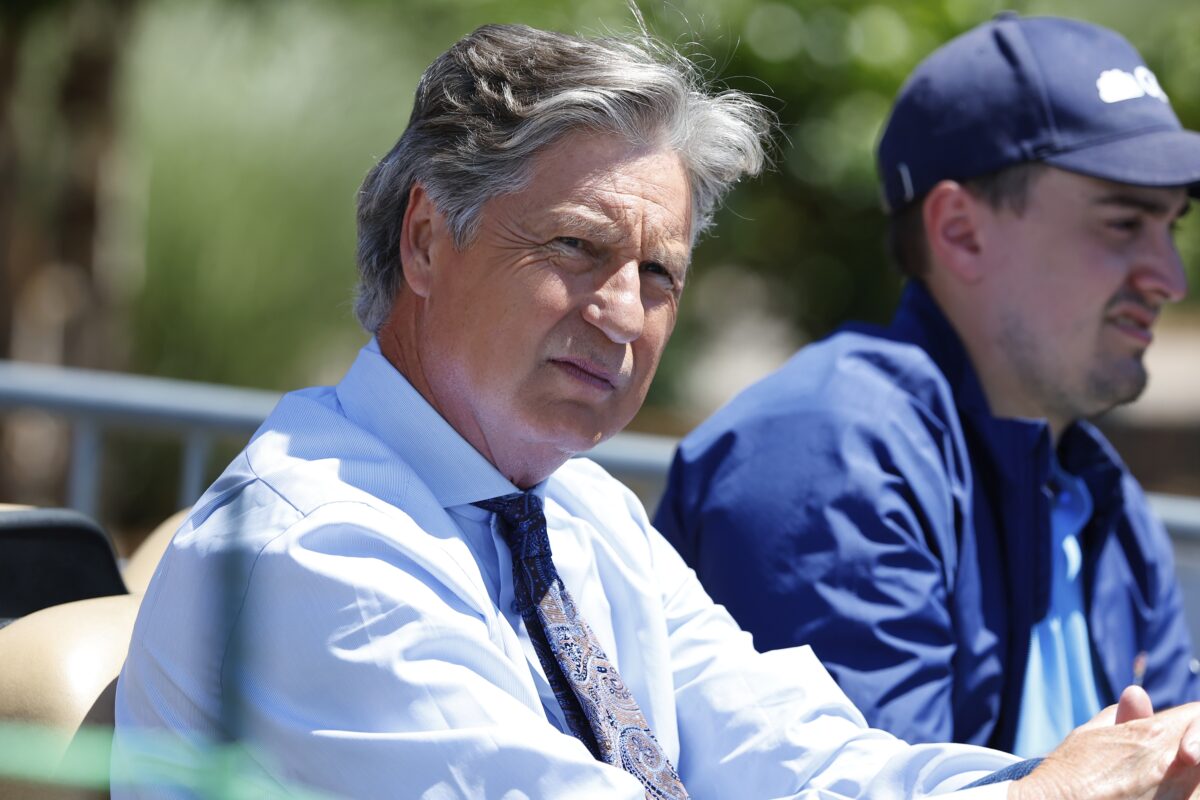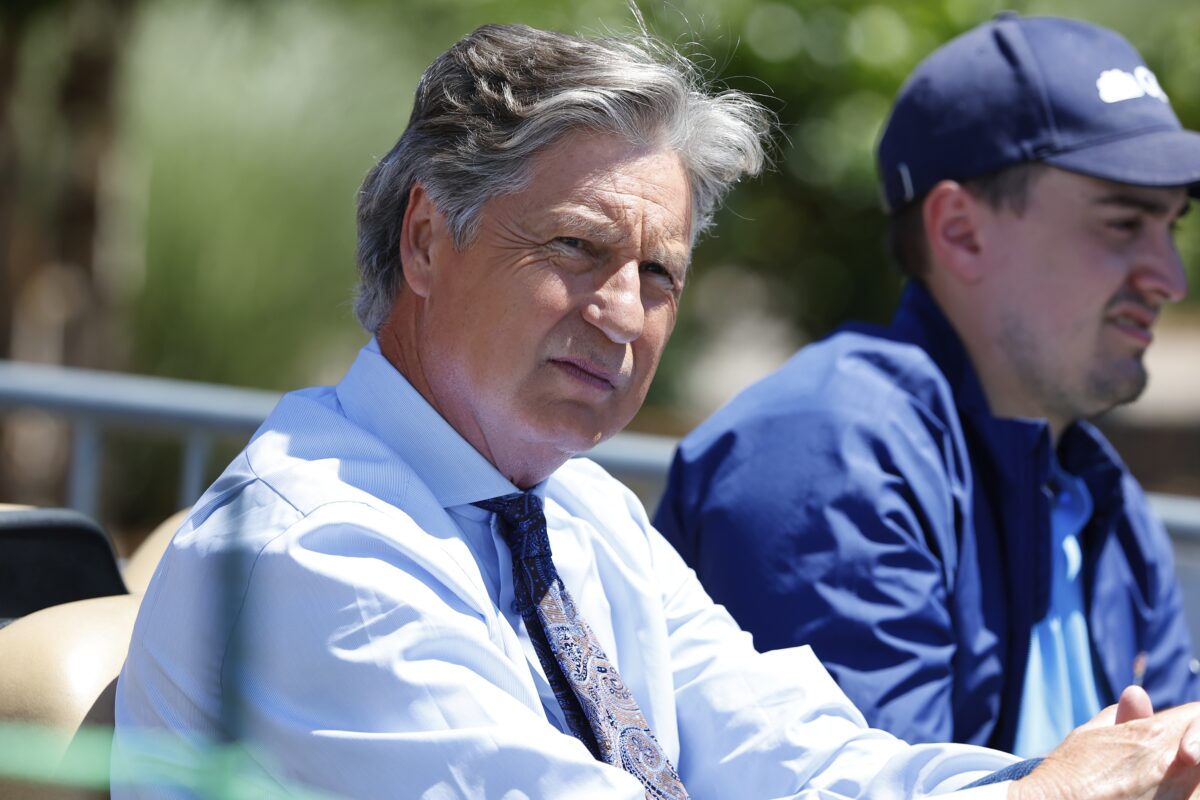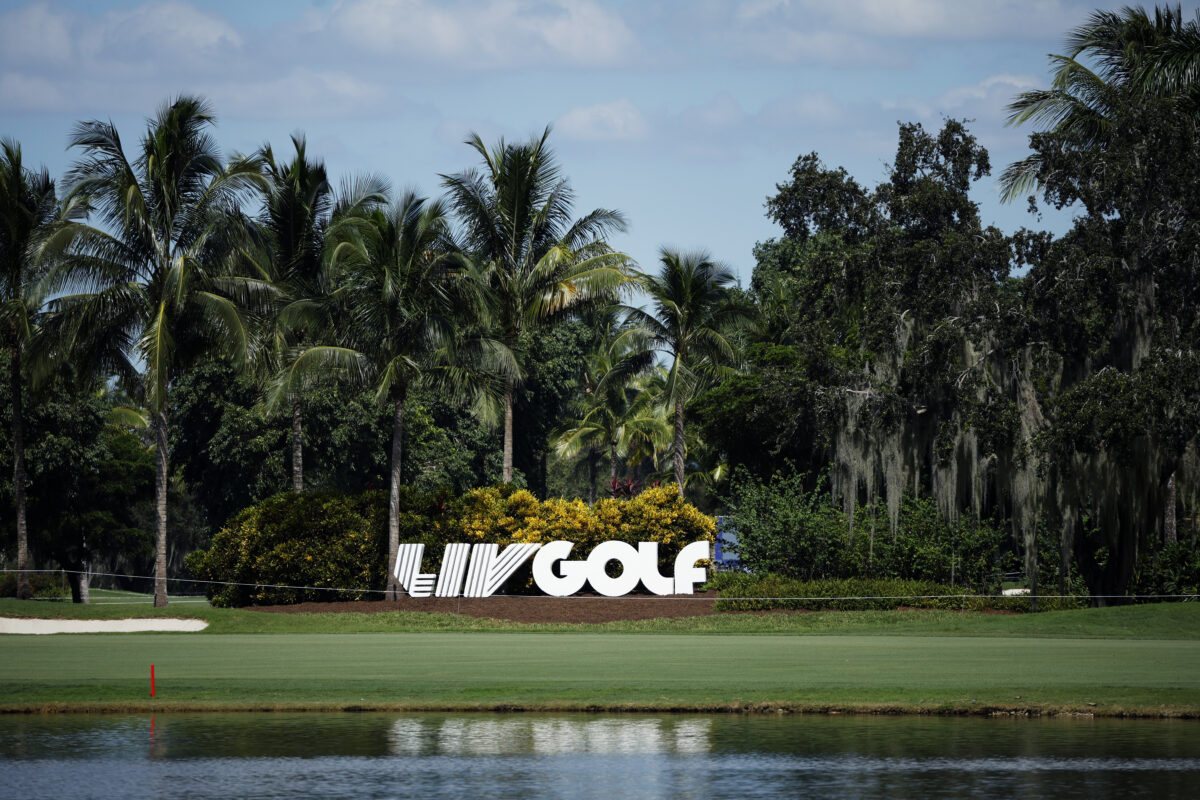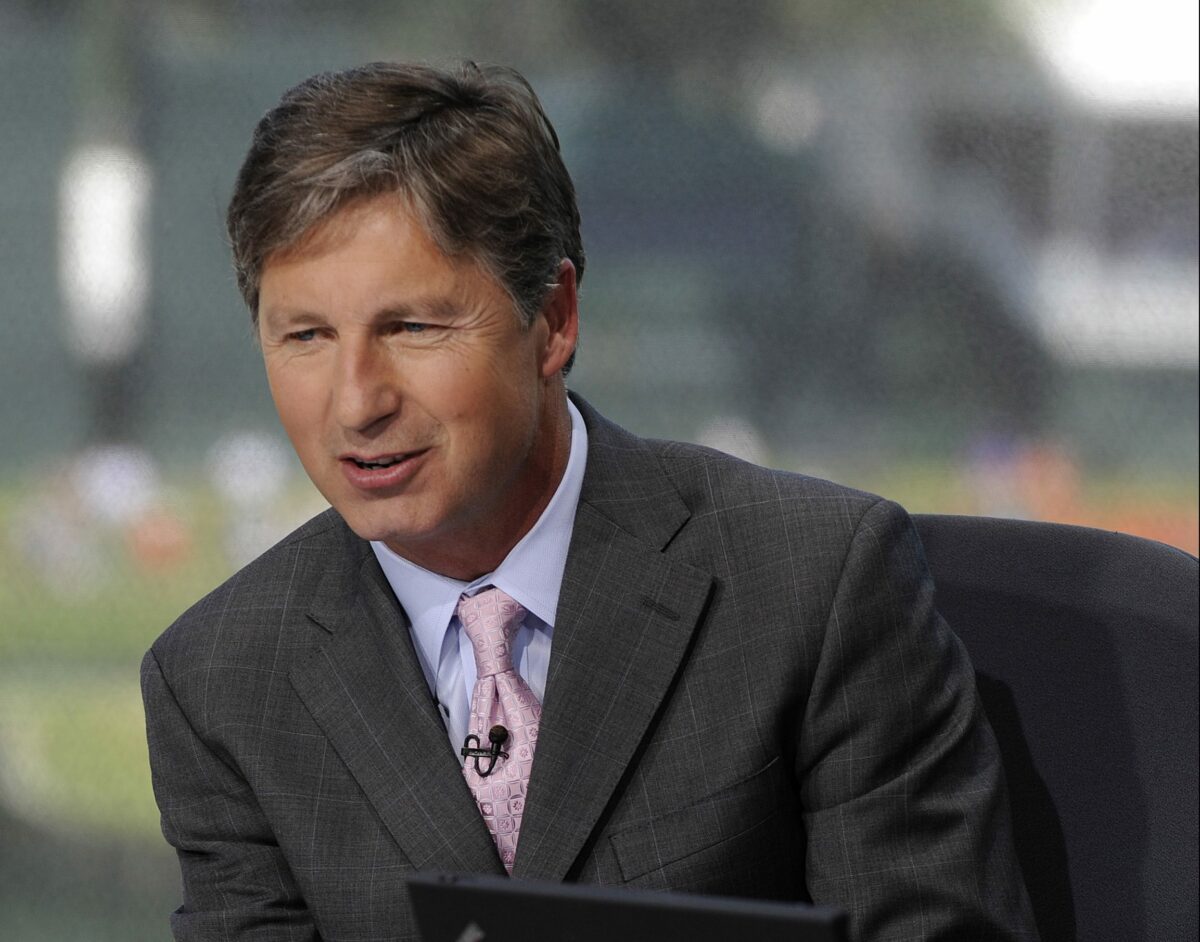Did we not mention in part one of our Q&A with Golf Channel’s Brandel Chamblee that we talked for more than two-plus hours?
There was a lot to unpack, especially about LIV Golf, Saudi Arabia and the future of men’s professional golf.
We gave you a couple days to wade through it and now we’re back with more and if you count yourself among the golf fans who is over all the talk about greed, money, power and the split that plagues men’s professional golf, part two of this conversation with Chamblee will be more to your liking.
We’ve broken it into four parts so feel free to jump around to your favorite section.
GWK: Are you buying or selling stock in Tiger Woods?
BRANDEL CHAMBLEE: Are you talking about as a player or as somebody who can impact the game of golf?
GWK: I was thinking more as a player.
BC: It would not surprise me if Tiger Woods won another golf tournament. I think there will be times this year when he plays where his ball speed will get up over 175 miles an hour. I think his golf swing still looks great. As far as I can tell it looks like his chipping is sharp. Putter looks pretty darned good. It wouldn’t surprise me if he won another golf tournament.
If you were to ask me whether or not I was buying or selling whether or not he wins another golf tournament, I’d say the odds are probably not in his favor, as they’re not in anybody’s favor who’s 48, and they’re further not in the favor of anybody who’s been beat up as much as Tiger Woods has been. But last I checked, nobody has done the things that Tiger Woods has done, and that includes Sam Snead.
The idea that Tiger and Sam are tied (for most career Tour victories with 82) is preposterous to me. They’re not tied. Tiger has already won more individual golf tournaments than Sam by five. If you go back and look, Sam has got five tournaments that counted as wins, and I believe one tournament in there where they didn’t even [have a] playoff. So he’s a co-winner with two or three other people. I believe the AT&T at Pebble Beach (formerly the Bing Crosby Pro-Am).
So Tiger has got 82. Sam’s got 77 or 76 individual wins, depending upon how you want to look at it. But he doesn’t have 82. Tiger does.
BC: Tiger. I didn’t think he would come back from the chipping yips. I’ve never seen anybody come back from the chipping yips. He maintained they weren’t the yips and maybe they weren’t and maybe that’s why he was able to come back, but I used to always add the caveat that if anybody could overcome them he would be the one to do it because he had proven himself to be mentally the strongest player, at least in my view, in the history of the game, and I think his 54-hole closer rate speaks to that. I also always said I hope I am wrong. I hope he overcomes it. I just didn’t think he would. I couldn’t have been more wrong on that, and I was happy to be wrong.
BC: Look at him. Since 2017 how many times has he won? Three times. You go look at his strokes gained total from 2013 to 2017, and you look at his strokes gained total now, and he’s roughly half the player that he used to be. That’s not oblivion by a long stretch, but when you’re winning majors and setting the world on fire and winning as often as he was to where he’s at right now is quite a difference.
I think the most dangerous place on any golf course, not OB or not in the water, it’s the driving range. That is the most dangerous spot at a Tour course. We talk a lot about players that make changes and get better. That’s just the nature of our job because they’re at the top of the leaderboards. So it’s a wonderful story. They were this player before, they’re this player now, they’ve made the changes, we laud whoever they’re working with, we laud the changes. We don’t talk as much or even ever about all the players that make changes and are at the bottom of the leaderboard because then they’re gone.

We don’t dissect that as much but I pay attention to it. I pay really, really close attention to it, all the players that make changes that are nowhere to be found. Yani Tseng is oblivion. She was the best there was, and she’s in oblivion now. But we don’t talk about the changes that led to that oblivion and warn players out there in that regard. What we do say is so-and-so worked with so-and-so and they’re playing better. It makes it sound like making changes is a good thing. More times than not, it’s not. So Jordan Spieth’s changes to his golf swing, they may not be obvious when you just watch him, but if you put it on video and compare it to 2015, I would say it’s substantially different.
He used to have just a slight cup in his wrist at the top. The club was set beautifully. Now he’s got a bow in the wrist and the face is a little bit shut because the whole world has fallen in love with strong grips, bowed left wrists and massive rotation. Did he do that to pick up a little speed, because he did pick up a little speed. But it’s a dangerous thing to start messing with your golf swing.
GWK: As a player, you had the rep of being one of the nicest guys on Tour. What has it been like to transition to being considered one of the most controversial people in golf?
BC: I just feel like I’m doing my job. I adore people just as much now as I did as a player. As a player, you’ve always got work to do. In commentating you’re talking to as many different people as you can to get different points of view, different ideas, bounce your opinions off of other people.
But I’m just doing my job. I’ve said this before; I don’t say things to be provocative. I say things that I’ve researched, thought about, that I believe to be accurate, and oftentimes they’re thought to be provocative. But that’s not the intention. The intention or the role as I see it is to tell the audience what’s not so obvious because by the time we come on the air, I always tease that everything that could possibly be said about golf has already been said about golf. So we’re on air, and my role is to tell the audience what may not be so obvious or what I find to be interesting about that day.
It used to mostly just be about golf, and I enjoyed those days a lot more than these. But the nature of the job is going to be controversial because my job is to tell people why things happen. It doesn’t matter who you are. In telling people why things happen, they’re always going to say ‘Who the hell are you to tell us why things happen?’ People are very comfortable with what happened, what the score was, who hit the most fairways, who hit the most greens. Those things are obvious. But when you try to say why did somebody hit more fairways or more greens or why somebody lost or why somebody won – it ruffles some feathers, but that’s my job, so it comes with the job.
BC: Oh, I’m sure they know I played on Tour. I don’t know that they would know my credentials, if you want to call what I did credentials. I sum up my career as a nice enough career. I played roughly 15 years on Tour. I think you play any sport at the highest level for 15 years it’s a pretty solid accomplishment. I got to 57 in the world. I never cracked the top 50. I would have loved to have done that, but finding somebody who’s 57th at what they do in the world, I think it’s safe to say they’re an expert at it.
I thought long and hard about what I did when I played golf for a living, and I think long and hard about it now. But I would assume they know that I played the Tour.
BC: Probably Nobilo. Frank and I were together 2004 – I don’t remember exactly when he left to go to CBS (2015 and full-time beginning in 2020). But we would have worked together for 12, 15 years, pretty darned closely together.
GWK: Do you miss or reflect on your time with him?
BC: Yes, absolutely I do. I enjoyed his pranks, wit and humor, and I still do. I enjoyed the back and forth. We disagreed fairly often, sometimes sort of famously so. But I always learned from him. He did it his own way, saw things differently than me, and I was better off for the exchange.
GWK: Is there anything you wish you did differently in your working relationship with Lisa Cornwell?
BC: I think to the degree that that’s still being litigated, I’m not allowed to talk about it.
BC: They’re probably worried about having to bleep out every other word. I think Eamon finally cussed on air last week. Somebody sent me the clip and he corrected himself and tried to apologize. But I don’t know. That one might just devolve into one insult after the other for 30 minutes. We’ve worked a few times together. I think we’ve done a couple shows together. I get in my insults, he gets in his insults, and I think we manage to talk about golf to some degree.
BC: You know, I worked for 16 years down in Orlando. So we were 1,000 plus employees down there. I got to know a lot of them fairly well. Not all of them but a lot of them. They knew what I was going to say in edit before I said it. They knew golf cold.
I think everybody at Golf Channel was heartbroken a little bit at not getting to work with people they had worked with for a decade or so. I think moving to Stamford is a net positive in terms of higher production values. The studios are massive. They’re blinged out. They look great. We’re going to have more tools up there. But I think they’ve hired a lot of enthusiastic, sharp-as-hell people that I absolutely love to work with, but I miss the people that I used to work with. But I absolutely love the people that I work with now.
GWK: Does Golf Channel give you any notes about your hair, and if so, do they want it a certain way?
BC: No, they don’t. But the makeup ladies, if it’s sticking up, they run out with the hairspray or whatever. They would love it if I used hairspray. But I’m not a fan of hairspray. So yeah, occasionally it’s sticking up here, there and everywhere. It’s a fairly constant source of good-natured ribbing from them.
BC: I’d be happy to do both. When I was doing the analyst at The AmEx I thought ‘Could I do both?’ That week, you’re so engaged in the golf that when you get off the show I can tell you every shot hit all day long. So, I’d be happy to do both of them. I think “Live From” is such a fun show to do. I love the spontaneity of it. They are long enough shows to where at a certain point the script gets thrown out the window and you just react. When they asked me to call some live golf, I was like ‘You guys are the bosses, I’ll do whatever you want me to do.’ I certainly enjoy the challenge of it.
The hard part about finding someone to do the job is getting someone to do it for a couple of million bucks. Tour players live in fantasy land where a couple million dollars is nothing. And then getting somebody who 3-4-5 years down the road can talk about players they don’t compete with anymore as well about players they no longer know as well. To do so, you have to work your ass off.
To find someone who doesn’t want to play golf, who will do it for a few million bucks, is articulate, opinionated and will do the work is a hard person to find. Trevor Immelman (CBS’s lead analyst) is unique in that he completely lost his game. I don’t know what NBC wants to do in that role but I think they want to take their time making that decision and I think they’d be crazy not to get Tiger Woods. I would love for Tiger to be in that chair. It would be awesome. I don’t know what that would cost but seems to me it would be worth every penny.
GWK: Tell me one good story that personifies your dad and the way he raised you.
BC: I’ll give you a couple. Energy crisis in the ’70s, couldn’t get gas. I wanted to go play in the Texas-Oklahoma junior in Wichita Falls, which I think that’s a couple hundred miles away. It wasn’t our day to get gas, I guess, and none of the cars had much gas in them, and it was time for me to leave. My dad came in, and he’s like, ‘Hey, pack up, let’s go. Let’s go to the Texas-Oklahoma in Wichita Falls.’ My mom is like, ‘Harold, there’s no gas in the car,’ and he’s like, ‘I’ll find gas.’ I remember throwing the clubs and suitcases in the car and got in and there was less than a quarter tank of gas.
I think he stopped on some farm and went in and introduced himself to the farmer, paid him for a tankful of gas because my dad was a real friendly guy. But he drove out in the middle of the country. He didn’t get on the highway and go to a service station because the lines were too long or it wasn’t his day. He drove to some farm and talked a farmer into giving him a tank of gas. They became fast friends. Yeah, that sums up my dad.
I had just started playing golf when I got into high school, so I wasn’t very good at golf. I was shooting in the 90s. Everybody it seemed like that I was playing against was shooting 68 or 70. There are a whole bunch of players I grew up with that made it to the Tour.
So the high school golf final was coming up, and my dad said to me, the night before first round, he’s like, ‘Hey, son, go out there and have fun tomorrow, don’t sweat it. If you don’t make it, we’ll put together a schedule for you, we’ll find places for you to play, and I’ll get you there. Don’t worry about it. Go out and have some fun.’ That summed up my dad. He was always there.
Then I don’t know how he did it, but in the mid-’80s, early to mid-’80s, his businesses, he was having some trouble, but I never knew it. He still managed to put everybody through college, pay for cars and insurance, and send me to golf tournaments, and I never heard him complain once, never, not one time.
BC: Well, that sums up my dad, too. That was a good one.
I had just won the Dallas Junior or the Dallas Men’s, and I was out playing at a pretty famous golf course in Dallas called Cedar Crest, famous for a lot of reasons. They played a major there in the ’20s that Walter Hagen won, but also a really famous gambling club. Big gambling. Of course that’s true of most municipal courses in Dallas. But I was out there playing with some high school buddies, and this elderly gentleman, Black man came up to me and asked me if I wanted to play a match for $100 a hole. He was going to play me with three clubs and I could pick two clubs. That was the game.
I said, ‘Well, I can’t do it now because I have a game but I’ll come back next weekend and play you.’ He’s like ‘But you’ve got to have $900, I’ll have $900, we’ll both put it up and give it to the head pro or whatever before we play, and we’ll play $100 a hole for the nine holes.’ He told me he was going to use a 7-iron, a wedge and a putter. So I went home, and at the time I was working in the bag room at Las Colinas Country Club, and I had $300, $400, $500 that I had saved up and I told my dad that I needed to borrow the rest of it, $400 or $500, and my dad said, ‘Explain the game to me.’ I said, ‘This guy is like 70 years old and he’s going to play with three clubs, and he told me I could choose any two clubs and we were going to play nine holes, $100 a hole.’
I had a week to practice and prepare for it. My dad goes, ‘All right, I’ll loan you the money, but you’re going to get your ass beat.’
I said, ‘Dad, there’s no way I’m going to get my ass beat.’ I said, ‘There’s not a chance. This guy is like 75 years old.’ Then my dad told me that he put himself through college playing 9-ball and 8-ball and he was the best pool player there was in Lubbock, Texas, and then he explained that a man came in one night and spotted him everything and gave him the break, and my dad said after the break he never shot again. He goes: ‘There’s always somebody better. If a guy comes to you with a game and proposes a game, he’s thought about this game more than you. He knows his game. I’m just going to tell you you’re going to get your ass beat.’
Anyway, so I went out and I played with an 8-iron and a putter because I could blade the 8-iron with a Top-Flite, and it would roll out 250 yards because the fairway was rock hard. I could punch that 8-iron 160 yards and I could chip with it, hit bunker shots with it. I shot 2-over par on the front nine with an 8-iron and a putter, 2-over, and I lost $300. So I was able to give my dad his money back, but when I came back in, my dad was sitting on the couch or his chair and he said, ‘How did you do, son?’ I said, ‘I shot 2-over.’ He goes, ‘How bad did you get beat?’ I said, ‘I got beat pretty bad.’ He said, ‘I told you were going to get your ass beat.’
But that man that I played got on the first tee and sure enough he had a 7-iron, a wedge and a putter, but the 7 had a 2-iron loft on it and a driver shaft, and it said 7-iron on the bottom, and he smoked it.
GWK: Who was the hustler?
BC: His name was Nate, he was a fella that used to travel with Titanic Thompson and gamble with Titanic Thompson, the most famous gambler ever. They were really good at going into cities and finding guys who thought they were really good, which I would fit that bill, and then betting them and make it look like they were going to have a chance. I had no chance. He wanted to play the back nine. I was smart enough to quit. I made every putt I looked at and shot 2-over.
Another story is when I was 11, my brother and I had fancied ourselves as cowboys, my older brother, and we wanted to be cowboys. We wanted to see what it was like to pack our saddle bags full of chili and take off and ride.
So we set out to ride our horses to Lake Tawakoni. That’s 100 miles. I was 11, my brother was 13. My mom, as any rational mother would be, was dead set against it. But my dad was like, ‘They’re going to be fine. Let them be boys.’
To reassure my mother that we would be fine, he drove the route there so we took specific roads, and at night, we would put a sign out saying we’re camped right here, so they would drive out and see us. My dad was happy enough to let us do that, encouraged it.
The footnote to that is we only made it like two and a half days going 20 miles because we could have made it, but it turns out the horses were not; they get saddle sores, and we hadn’t anticipated them getting saddle sores. Riding them 10 hours a day, they got saddle sores. After two days we ended up on a farm where we played pinball and pool. Some lady thought we had run away and she called my parents and my parents came out to collect us and get the horses, and the lady – until my parents got there, she wasn’t buying the story, that anybody’s parents who were good parents would let them do what we were doing. But that was my dad. My dad was like, ‘You know what, it will be fun for you guys.’
GWK: Update me on your architecture work with design partner Agustin Piza.What is the status of your golf course design product, and what will ‘the butterfly effect’ mean to design going forward?
BC: Well, the butterfly effect is a project that my partner and I are doing in Desertica, Mexico. It’s four six-hole loops that looks like a butterfly. But the butterfly effect is a metaphor. One, it actually does look like a butterfly, but two, it’s also a metaphor which is a butterfly can flap its wings in South America and cause a hurricane. What happens and looks like a small thing can be a big thing and affect the game, and the big deal about this butterfly effect is if you look at trying to get the most golf course in a small area and you look at what you can do with four loops of six holes, that’s four factorial. So that’s four times three times two – that’s 24 different golf courses that you can play.
One of those nines is going to be designed for the best women players in the world because it hasn’t been done yet. I want to do it. I had a project in south Texas that fell through where we were going to build an equivalent of the TPC Sawgrass but for the best women players in the world. Still trying to do it.
Augie and I have another project on the other side of Cabo that’s in the works, and we’ll see how that turns out. We’re still up and going. Augie is doing things, the TGL for Tiger, so Augie is pretty darned busy.
GWK: What’s the timeline on the one in Mexico?
BC: Well, it just got past all the environmental studies, so we’re going to break ground this summer. It’s been a year and a half in the works. It’s in a place where there’s natural springs, there’s white sands. There were a lot of environmental issues to get over.
GWK: What made you think of doing something specifically for women, for the top women?
BC: It’s long been a pet peeve of mine. My wife loves golf. In fact, when she plays at our course, Arizona Country Club, they play a mix of the forward tees and the next tees back, and that course is, I think, 6,000 yards, and that’s way too long for club women to be playing. I think 6,000 to 6,200 yards is the sweet spot, at most 6,300 yards, for what the LPGA should be playing, and they play courses at 6,600, 6,700, 6,800 yards long.
I get there through math and data. Let me see if I can pull the computer up here and I’ll show it to you, but if you look at how many men averaged under 70 last year. I think last year something like 50 men averaged under 70 on the PGA Tour and only two or three women did the same. I don’t think that’s at all because of skill, I just think it’s because they play their golf courses too long. The average PGA Tour course is 7,200 yards; the average LPGA course is 6,600 yards long. The longest woman player on the LPGA Tour is 40 yards shorter than the longest man. The shortest woman is roughly shorter than the shortest man. So if you take 40 yards times 14 tee shots, that’s 560, and then to get on the approach shots the same trajectory and spin rate, they have to be roughly 30 yards closer. So 30 yards times 18 approaches is 540, and you add 540 and 560 you get 1,100 yards. Subtract 1,00 yards from 7,200, yards you get 6,100 yards. When is the last time you saw women hitting 6- or 7-irons on par-5s fives the way men do regularly. I think it would be more exciting golf if you’d see more eagle opportunities, you’d see them driving par-4s the way the men do. Scores would be lower. It would be a better stage for them if they played yardages that would give them the equivalent trajectories and angles of descent into greens to stop them as fast as men do, and the scores would be lower.
I’ll give you a case in point. If you watch the Augusta National Women’s Amateur, that left bunker really comes into play on 18. When the men get in that bunker, they pull a 7- or 8-iron out and they pick it out and they knock it right up on the green. That bunker is designed for the best men players in the world who have more club head speed so they can hit it higher and get higher lofted clubs out of there.
When the women get in there, they cannot get it out, so they have to just pitch out or they hit the lip. So it looks like they’re not talented enough to get it out. It’s not that at all. These women are unbelievably talented. It’s just the bunker wasn’t designed for the best women players in the world, it was designed for the best men players in the world. So imagine that bunker being further up, not as deep. Women drive it in there and they hit 7-iron in there and hit it two feet from the hole and win the Augusta National Women’s Amateur. It gives you a heroic moment that was unrealized just because they’re not playing a golf course designed for the best women players in the world. Most golf courses are designed – if they’re tournament courses – they’re designed for men players, and then they try to move the tees around in such a way that women players can play it, but they’re not designed with them in mind.
